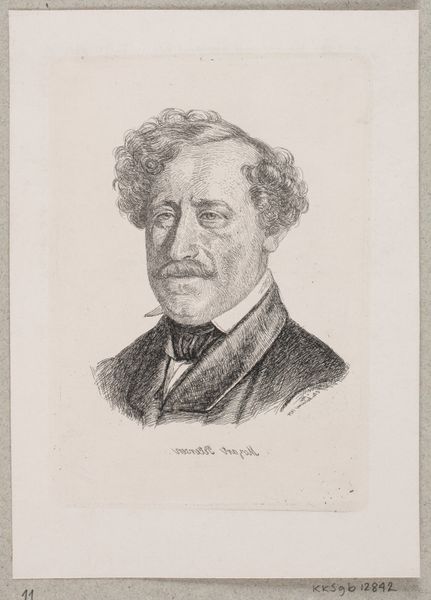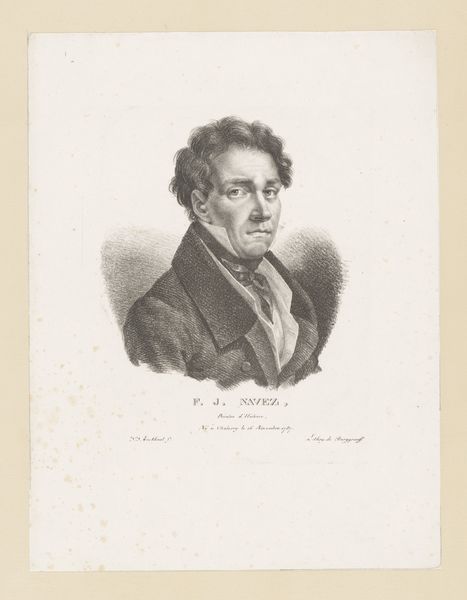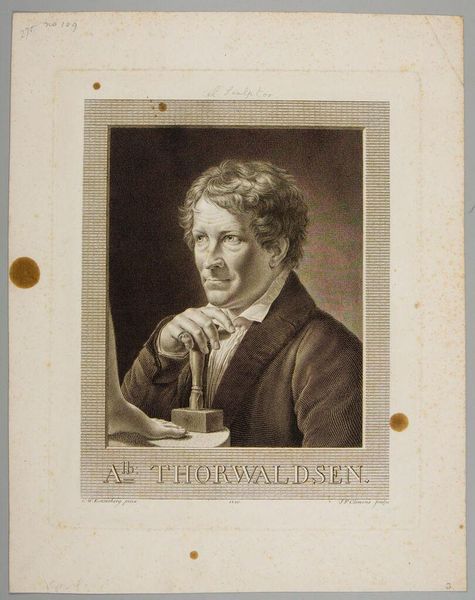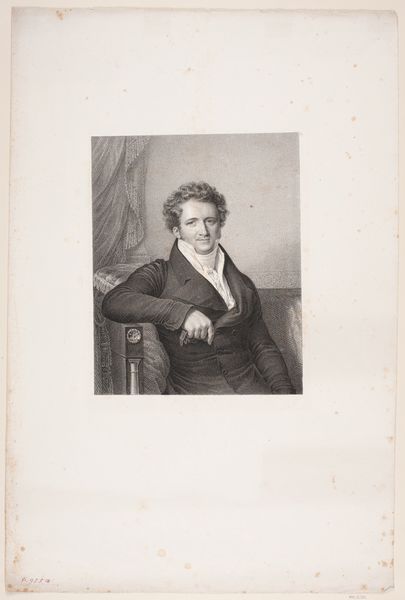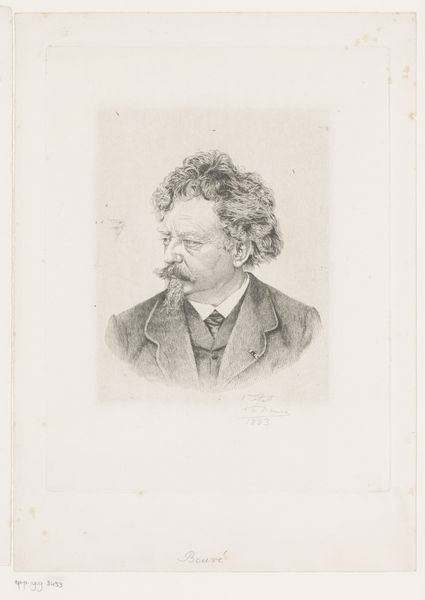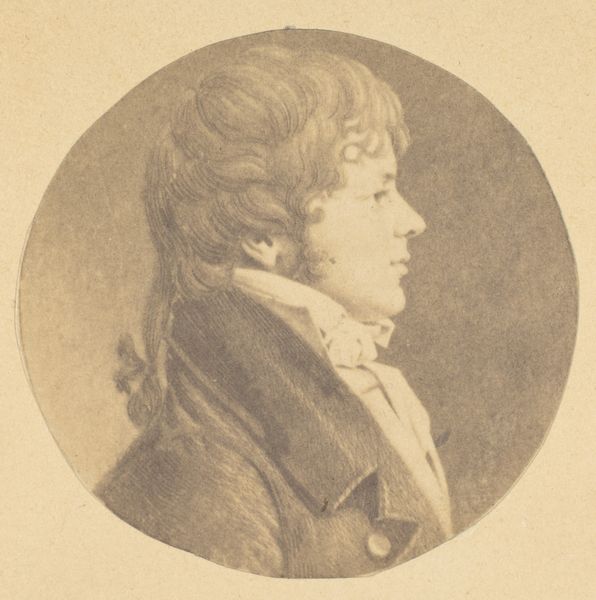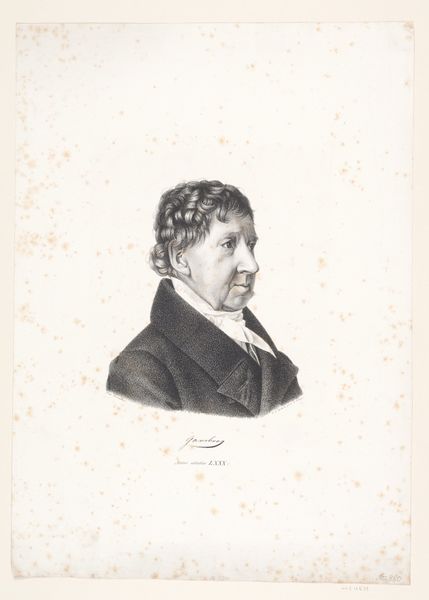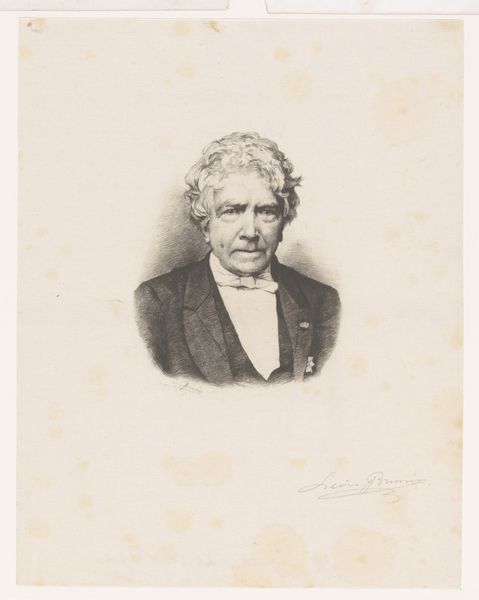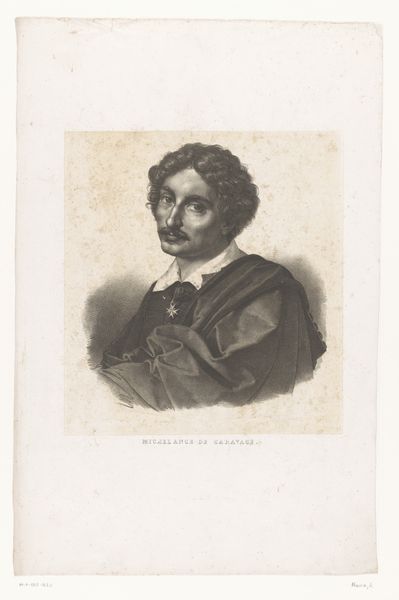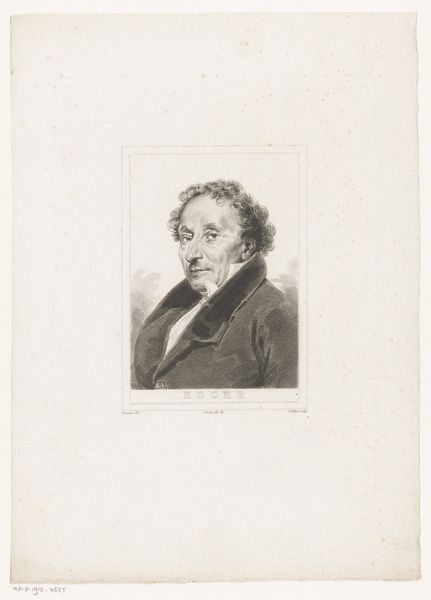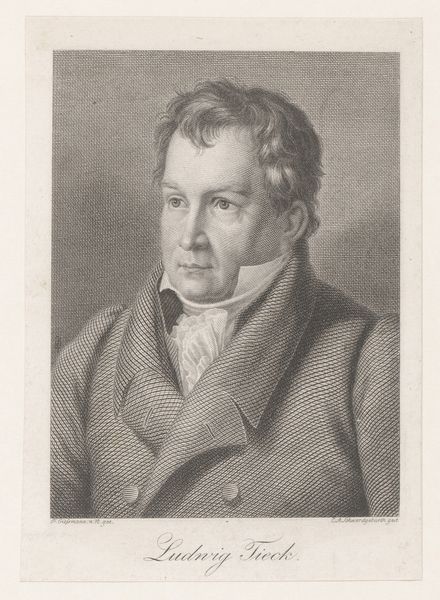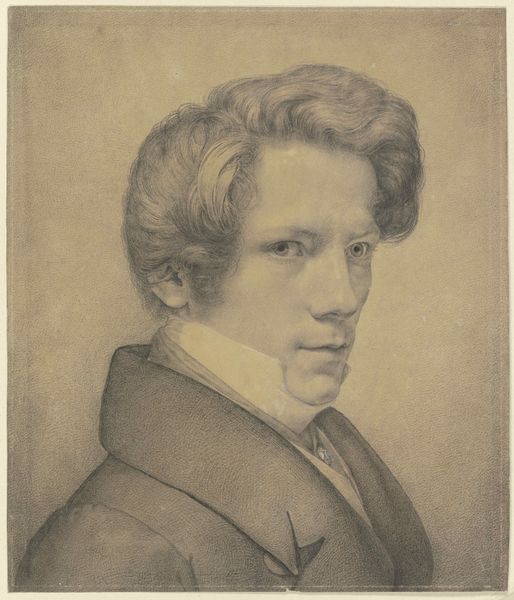
print, engraving
#
portrait
#
neoclacissism
# print
#
historical photography
#
history-painting
#
engraving
Dimensions: 336 mm (height) x 267 mm (width) (bladmaal), 287 mm (height) x 231 mm (width) (plademaal), 250 mm (height) x 194 mm (width) (billedmaal)
Editor: Here we have an engraving titled "Alb. Thorwaldsen" created around 1820 by J.F. Clemens. It strikes me as a very formal portrait, yet the inclusion of the sculptor’s tools gives it a personal touch. How might we interpret this within its historical context? Curator: That's a perceptive observation. This engraving functions within the context of the rising cult of the artist during the Neoclassical period. Clemens' portrait immortalizes Thorwaldsen, positioning him as a celebrated public figure. Notice how the tools aren't just props, but symbols. The mallet and the classical foot fragment evoke both craft and the ideal of ancient beauty. Editor: So it's about elevating Thorwaldsen's status in society? How did imagery like this contribute to the broader understanding of artists? Curator: Precisely. The portrait actively shapes how the public perceived Thorwaldsen. It was strategically disseminated via print, influencing the artistic market, securing commissions, and promoting Neoclassicism as aligned with societal values. Consider how galleries at the time showcased plaster casts alongside original antique sculptures, shaping the public's understanding of art. Do you think this engraving aims to align Thorwaldsen with that perceived "golden age"? Editor: I see what you mean. Presenting him with these classical elements reinforces the idea of him being part of this idealized tradition. The portrait, in a way, is selling both him and the art movement. Curator: Exactly! It blurs the line between a simple representation and active construction of identity. This work provides valuable insights into the mechanisms behind constructing artistic fame. Editor: It’s fascinating to think about the social and political work that images can perform! I’ll never look at portraits the same way again. Curator: Indeed! Considering the historical circumstances gives us the power to truly see art.
Comments
No comments
Be the first to comment and join the conversation on the ultimate creative platform.
